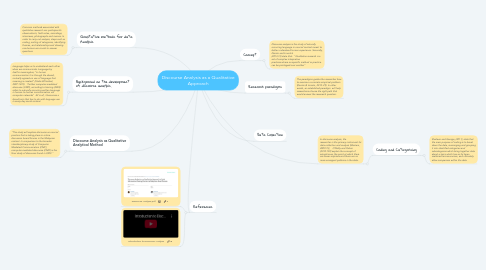Discourse Analysis as a Qualitative Approach
by Diana M


1. Qualitative methods for data Analysis
1.1. Common methods associated with qualitative research are: participant/s observation/s, field notes, recordings, interviews, photographs and memos. In order to carry out analysis, steps such as coding, sorting of categories, identifying themes, and relationships and drawing conclusions are crucial to answer questions.
2. Background on the development of discourse analysis.
2.1. Language helps us to understand each other when we communicate. Language by itself is meaningless; “in human communication it is through the shared, mutually agreed-on use of language that meaning is created” (Starks &Trinidad, 2007:1374). "Further computer-mediated discourse (CMD), according to Herring (2004) refers to naturally occurring written language in human-to-human communication via computer networks" All in all, it becomes a broad term that has to do with language use in every day social context.
3. Discourse Analysis as Qualitative Analytical Method
3.1. "This study will explore discourse as a social practice that is taking place in online discussion board forums in the Malaysian context. In comparison to the broader interdisciplinary study of Computer Mediated Communication (CMC), computer-mediated discourse (CMD) is the finer study of discourse found in CMC."
4. References
4.1. Discourse Analysis.pdf
4.2. Introduction to Discourse Analysis
5. In discourse analysis, the researcher is the primary instrument for data collection and analysis (Merriam, 2009:15), O’Reilly and Parker (2012:192) explain the concept of saturationas, the point at which there are fewer surprises and there are no more emergent patterns in the data.
5.1. Coding and Categorising
5.1.1. Shaheen and George, (2011), state that the main purpose of coding is to break down the data, rearranging and grouping it into identified categories and subcategories which bring together data about a topic which has so far been scattered across sources, and ultimately allow comparison within the data.
